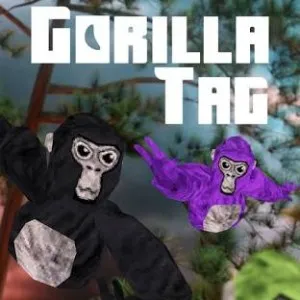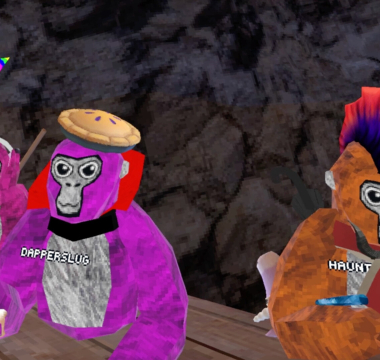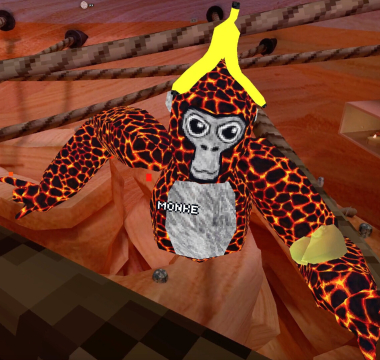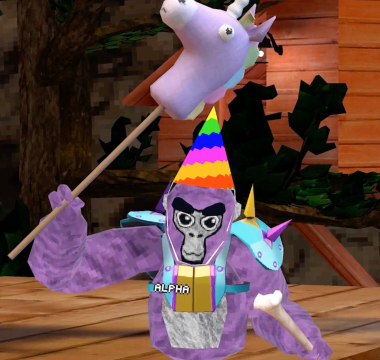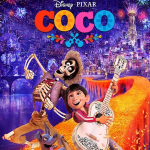From the moment I donned the VR headset and entered the world of Gorilla Tag, I knew I was in for an unconventional adventure. The experience felt raw and refreshing as if I had stepped out of a rigid simulation and into a playground where my natural instincts took over. I was immediately captivated by the freedom of movement and lack of complex controls. The game’s simplicity was striking, yet it was layered with depth that only revealed itself as I became more immersed in the jungly digital environment.
Exploring the Primal Movement Mechanics
The movement system in Gorilla Tag is unlike anything I have ever encountered. Instead of traditional joystick controls, the game relies solely on my arms, demanding that I physically swing, reach, and push myself exactly like a gorilla would. This unique mechanic makes every minute of movement feel authentic, and it challenges me to coordinate my body in unexpected ways. I found that each leap and every clap of my arms was both exhilarating and physically demanding, which bridged the gap between digital fun and real-life exercise.
The Thrill of Physical Engagement
Playing Gorilla Tag is more than just a virtual experience; it’s a workout for both my mind and body. I appreciated how the game encouraged me to engage in physical activity while simultaneously testing my cognitive abilities. Navigating the obstacle-laden digital jungle required me to strategize which branches to grab, which ledges to swing to, and how best to evade my playful competitors. The adrenaline rush that comes from both outmaneuvering others and pushing my personal physical limits made each session uniquely invigorating.
Innovative Social Interaction
One of the standout features of Gorilla Tag is its community-driven gameplay. Playing in multiplayer mode, I found that the game fostered a sense of camaraderie and playful competition. The interactions were based on movement and physical presence, rather than voice commands or text chats, which made the social aspect feel more organic. I recall moments when I was both the chaser and the chased, and every encounter was filled with an unreserved sense of humor and sportsmanship. This indirect form of communication created a dynamic environment that felt both authentic and inclusive.
An Artistic and Minimalistic Aesthetic
The visual design of Gorilla Tag is purposefully minimalistic yet striking. The simplicity of the textures and the bold, unadorned color palette allow me to focus on the gameplay. Unlike other VR titles that bombard players with hyper-realistic graphics, Gorilla Tag uses its aesthetic to accentuate movement and physical expression. I found that the abstract environments added a layer of surrealism to the experience; they were not distractions but reminders that the core of the game lay in its kinetic poetry. The unpretentious design is, in its own right, an artistic statement that emphasizes play over polish.
The Challenge of Balancing Control and Freedom
Gorilla Tag brilliantly walks the line between control and freeform movement. Without the reliance on conventional input methods, I quickly learned to appreciate the raw, physicality that the game demands. There is a delicate balance between letting my body move freely and mastering the technique required to propel myself accurately. Every session provided a sort of informal class in motion physics, teaching me how subtle shifts in position could drastically alter my trajectory. This balance creates an intricate dance of effort and spontaneity, pushing me to refine my approach while also embracing the unpredictability of my own movement.
A Playground for Experimentation
Each time I dive into Gorilla Tag, I uncover new ways to interact with the digital jungle. The game’s sandbox nature encourages continual experimentation. I often find myself testing the limits of my swing or trying to invent new maneuvers to navigate around branches and obstacles. This spirit of exploration means that no two sessions feel identical. Whether I’m attempting to hop greater distances with a powerful push or sliding into a series of rapid-fire moves, there is always something new to try. This constant cycle of trial and improvement keeps my interest piqued, ensuring that boredom has no place in this virtual environment.
Inventive Level Design and Varied Arenas
The arenas in Gorilla Tag are diverse and thoughtfully designed to cater to different playstyles. Each world variant presents a unique set of challenges and spatial puzzles that require me to rethink my approach. In some maps, the pathways twist unpredictably high above the ground, demanding aerial precision, while others force rapid ground-level chases that mimic the frantic energy of jungle pursuits. I was particularly impressed by how each arena maintained a distinctive atmosphere despite sharing the same core mechanics. This variety enriched my experience, providing both nostalgic simplicity and innovative twists as I progressed through different environments.
The Social Dynamics and Player Interactions
In multiplayer sessions, the organic and physical form of interaction excites me beyond simple competition. The absence of overly complex communication methods places a premium on non-verbal cues and body language. Here, my gestures and movements serve as both my offense and my defense, while also inviting playful banter from fellow players in the space. I reveled in the moments when a well-timed dash or a cleverly executed maneuver sent my competitors into fits of laughter, reinforcing that Gorilla Tag is as much about community fun as it is about individual skill. These interactions, what might seem spontaneous and ephemeral, came to shape a vibrant environment where playful rivalry and genuine camaraderie coexist.
An Immersive Audio Landscape
The sound design in Gorilla Tag further enhances the overall experience. The ambient noises—the rustling of leaves, distant echoes, and subtle vocalizations of fellow players—work in harmony with the gameplay, adding a dimension of immersion and realism. Every sound seems to have been carefully calibrated to reflect the environment and the physical nature of the game. When I dashed through a canopy or swung past a cluster of branches, the audio feedback was immediate and precise, reinforcing the physicality of every action. This thoughtful soundscape significantly contributes to the excitement and tension of each encounter, making me feel as though I was truly navigating a lively wilderness.
The Role of Strategy and Tactical Choices
While Gorilla Tag is centered around physical movement, I quickly learned that there is a significant tactical component to succeed in this fast-paced arena. My gameplay evolved from pure instinct to include moments of calculated decision-making. I began to analyze the patterns of my opponents, learning when to conserve energy for a decisive sprint or when to feint and lure others into vulnerable positions. In several intense moments, I found this blend of physical prowess and mental strategy to be particularly rewarding. It was fascinating to navigate the tension between relying solely on raw agility and incorporating careful tactical choices to gain the upper hand.
The Ever-Changing Challenge of Multiplayer Dynamics
My experiences in Gorilla Tag have been punctuated by the lively unpredictability of multiplayer encounters. These sessions are not about achieving perfection but about embracing the chaotic, yet endearing, nature of human interaction in a virtual playground. The shifting dynamics between players—whether I was coordinating with others in a fleeting alliance or engaging in a spontaneous chase—offered me a unique sense of unpredictability and variation. Each session was akin to a performance, with every participant contributing their own style and strategy. The lively multiplayer mode not only tested my physical and tactical acumen but also kept me perpetually excited for the next interaction, knowing that every match would be a fresh experience.
A Testament to Minimalism and Creativity
What stands out the most in my journey with Gorilla Tag is how the game elevates minimalism into an art form. The design does not rely on ostentatious graphics or an overload of digital effects; instead, it harnesses the power of simple yet effective mechanics that prioritize player creativity and spontaneity. I appreciate the clever use of restrained visual cues that direct my focus towards movement and interactions, allowing me to express my physical abilities in the digital space. This minimalist approach is not just a stylistic choice but a deliberate design philosophy that invites players like me to see the beauty in simplicity. The game celebrates the raw essence of play, challenging both my body and mind without overwhelming me with superfluous details.

-
Autor:
Another Axiom Inc.
-
Size:
140 MB available space
Pros

- Innovative movement mechanics that require real physical effort and coordination
- Engaging and active gameplay that provides a fun workout experience
- Organic multiplayer interactions that foster a strong sense of community
- Minimalistic visual design that accentuates the core gameplay nature
- A versatile arena design offering a fresh experience in every session
- Challenging strategic elements that enhance both physical and mental skills
- Responsive audio design that deepens immersion
Cons

- Extended play sessions can be physically tiring
- Minimalist graphics might not satisfy those seeking detailed visual environments
- Occasional connectivity issues can disrupt the precision required in gameplay
- Unfamiliarity with the unique movement system may present a steep learning curve
